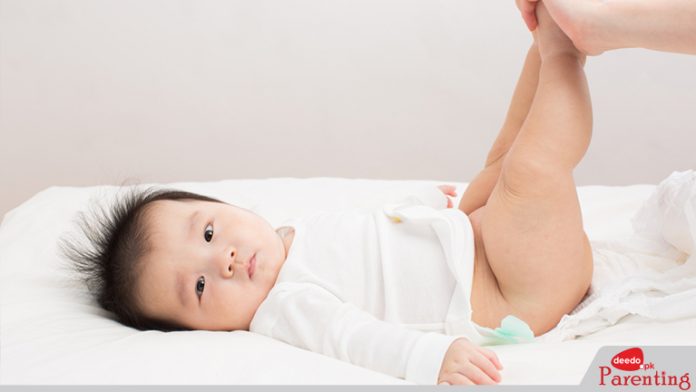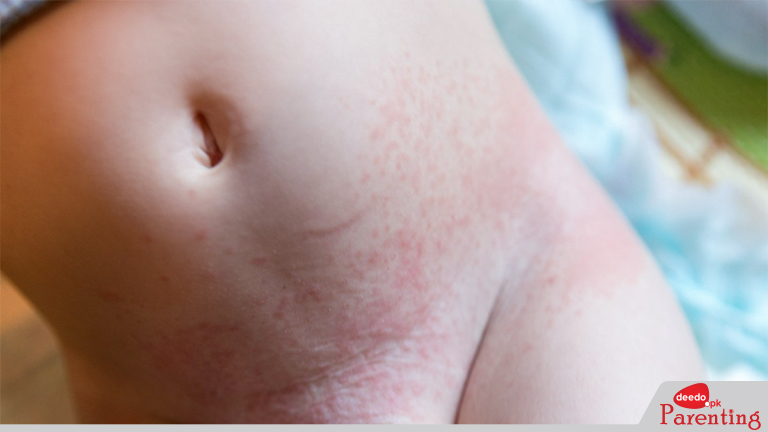DIAPER CHANGE
This is something you’ll be doing a lot! This section will guide you step by step on getting to grips with diaper change, and also advice you on protection against diaper rash and it’s causes.
Changing your baby’s diaper is a very important skill that you would want to learn straight away. It’s part of your daily routine of care that you want to give to your baby.
Changing diaper
First, lay your baby on a safe and secure changing table. Next, remove the diaper by lifting the adhesive tabs on the side of your diaper, then fold the tabs back so that they don’t stick on your baby. Then, using cotton wool dampened with water or specially formulated baby wipes, clean the babies genital area from front to back.
Fold the dirty diaper onto itself and set it aside. Place a clean diaper underneath your baby by gently lifting your baby’s bottom, pat the bottom dry, it’s always good to apply some specially formulated baby rash cream on your baby to protect him from diaper rash.
Secure the clean diaper by fastening the adhesive tabs from back to front, do ensure that the diaper is snug, not too tight. Finally dispose the dirty diaper, and wash your hands.
Diaper rash and protection
Soreness and redness caused by diaper rash is fairly common and can happen fast. But, there are ways to prevent and protect your baby from diaper rash. Here you will find all information regarding diaper rash, it’s causes, symptoms and prevention.
What is diaper rash?
Diaper rash is the most common skin condition especially in early childhood. If your baby develop diaper rash, you won’t be alone, most babies between 0-3 months develop diaper rash some way or the other. Although it’s much common in babies between 6-8 months, it can also happen much earlier.
What causes diaper rash?
. The diaper area is a totally different environment for baby skin. A combination of excess moisture due to urine, sweat, friction and faeces can cause diaper rash.
. Due to the enclosed diaper area, the heat and moisture encourages growth of micro-organisms that can cause rash or infections.
. Soreness, due to skin rubbing against the diaper, or from skin folds, can irritate the skin and cause diaper rash.
. Continuous contact of skin with urine or faeces are both can lead to a formation of ammonia that can irritate the skin.
Identifying diaper rash
Diaper rash can happen very quickly and it appears in the area under the diaper. There are some common symptoms though rash can look different from baby to baby.
Always keep a close check while changing your baby’s diaper for these symptoms:
Have a look under your baby’s diaper. If diaper rash exists, you’ll see some or all of these symptoms:
. Soreness or redness over a small or large diaper covered area, or wherever diaper touches the skin.
. Dry or raised bumps ( papules)
. Fluid/filled raised bumps ( pastules)
. Dryness, peeling or scalingof skin.
. The affected area may be warm to touch.
Most rashes are mild and can easily be treated with a skincare routine, however, in some cases with infections involved, urgent medical care is needed.
We recommend you to contact your pediatrician in these situations:
. Your baby cries in pain after every diaper change.
. If the baby has a fever
. The rash has blisters and is bleeding
. Rash spreading to other parts of the body like arms or face
. The rash doesn’t improve after a week and is reoccurring
How to protect your baby against diaper rash
Step 1: Clean baby’s skin
Firstly, always ensure that you change your baby’s wet or soiled diaper straight away. Gently clean the baby with specially formulated baby wipes or with cotton wool and water.
Step 2: Allow diaper area to dry
After you’ve finished cleaning the baby’s bottom, pat the skin dry with a clean tissue or let it air dry.
Step 3: Apply diaper cream
When the baby’s bottom is dry, always apply a barrier diaper cream, it will help protect the baby’s skin from constant contact of urine and faeces. It may also protect your baby’s skin against friction from the diaper.
Regularly follow this pattern, always remember, A clean child – A happy child!





















